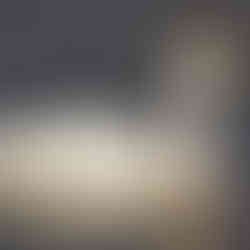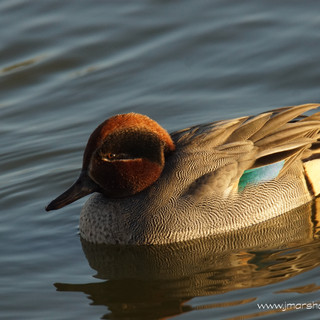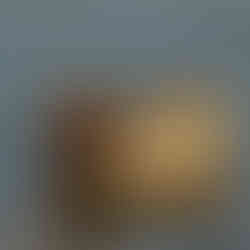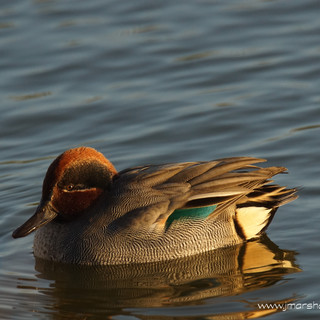STUNNING WHOOPER SWANS @ WWT CAERLAVEROCK
- Jonathan Marshall
- Oct 30, 2019
- 8 min read
Updated: Oct 16, 2020
On Wednesday I headed for WWT Caerlaverock which is a wetland nature reserve a few miles south of Dumfries in south west Scotland and is one of nine reserves run by the Wildfowl & Wetlands Trust which was founded by Sir Peter Scott. The reserve covers a 587 hectare site at Eastpark Farm on the north shore of the Solway Firth. There are several screened approaches and observation towers with a visitor centre, cafe, shop and farmhouse accommodation.
Almost all of the Svalbard population of Barnacle Geese make their way to the Solway Firth to spend winter with thousands heading for Caerlaverock. The population has recovered from just over 500 in the 1940s to well over 25,000 now. A pair of Ospreys have nested on the reserve since 2006 with the nest being observed via webcam through the site's website during the nesting season and at other times a nearby badger sett.
As I neared the reserve I could see large numbers of Barnacle Geese in the fields on either side of the road and in the trees around the car park I could see a pair of Redwings. It was a bright sunny day when I arrived and before heading across to the visitor centre I had a quick look at the feeders where there were Tree Sparrows, House Sparrows, Greenfinches, Chaffinches and a single Robin. After checking the reserve map and latest sightings board I headed along a path down the side of the visitor centre and Eastpark Farm to the Folly Pond Hide.
As the name suggests this hide looks out over Folly Pond where around the edges of islands were several Teals and Shovelers as well as a few Gadwalls. There were also a couple of Snipes hiding amongst the grass on the nearest island whilst in the water to my right I could see a pair of Whooper Swans swimming towards me. In the field beyond the pond I could see a couple more Whooper Swans as well as a few Crows. I left the hide and headed back along the path to the Farmhouse Tower which gives you views over the Folly Pond, Saltcot Field and in the distance the Solway Firth.
At the top of the tower I found a Robin which had managed to get trapped up at the top of the tower. The Robin was caught and taken down to the ground and released outside and from here I turned to my right and headed for the Wildlife Garden and Paddock. Hopping along the ground moving closer towards me was a friendly Robin whilst in the bushes were Tree Sparrows. A little further along I reached the Scottish Water Hide were I could see more Teals and Shovelers. There were also a few Wigeons here too and I walked a short distance east to the next hide where after a few seconds a Stonechat appeared at the edge of a bush to my right.

It was only there for a second or two before it flew across right in front of me and landed around twenty yards to my left. It moved around the large bush where it had landed for a few minutes before it was joined by a second Stonechat and they flew off to the right. As I left the hide I saw a trio of Linnets at the top of a tree and as it was approaching 11am I headed across to the Sir Peter Scott Observatory. At 11am and 2pm there is a Wild Swan Feed done with commentary from one of the reserve's wardens giving information on the ducks, geese and swans that call Caelaverock home during the winter.
The Whooper Swans make the journey from Iceland to the UK each year to spend the winter in the UK with number of Whooper Swans visiting being around 11,000. The Whooper Swans are not the only wildfowl that make the long journey to visit the UK with Teals, Shovelers, Wigeons, Pintails, Tufted Ducks and Barnacle Geese travelling from areas like Svalbard, Siberia, Iceland and Scandinavia. They migrate in huge numbers with 90,000 Barnacle Geese, 30,000 Pintails, 18,000 Shovelers, 210,000 Teals, 70,000 Tufted Ducks and 440,000 Wigeons arriving in the UK for the winter.

The Sir Peter Scott Observatory is on two levels and I went and sat down in the lower level where right in front of me I could see more than 40 Mute Swans waiting for the 11am feed to begin. There were also more than 50 Mallards and several Wigeons close by with a few Canada Geese and half a dozen Whooper Swans further out. On the far edges of the water were a few Shovelers and Teals with a few Crows moving along the grass banks.
The Warden now moved outside to begin feeding the birds and the Mute Swans descended on mass as the ducks joined in picking up the food not being devoured by the Swans. The Whooper Swans stayed further out as the Mute Swans followed the Warden across to the left and side of the pond. I left the observatory once the feeding was over and as I looked back towards the building and on the roof I could see a pair of Pied Wagtails moving along the edge. Here the path splits in two with the left hand path taking you along a tree lined avenue to the Avenue Tower and the right hand path towards the Saltcot Merse Observatory and the Solway Firth.

I took the right hand path where I could see Blue Tits and Great Tits moving along the tops of the hedge on either side and a Song Thrush amongst the tall grass at the bottom of the hedge on my left. After around a hundred yards I arrived at the Silver & Gold Hide which looks out east and it was currently very quiet with just a few Crows out on the grassland. I left the hide and continued towards the observatory whilst in the gaps in the hedge to my right I could see a pair of Barnacle Geese and a few Whooper Swans.
As I neared the Saltcot Merse Observatory a large flock of more than 500 Barnacle Geese flew westwards overhead. Like the Sir Peter Scott Observatory, this is also a two tier observatory and I headed upstairs to get a better view of the land and the Solway Firth. In the mud channels I could see several Little Egrets and a couple of Redshanks as well as a single Black Tailed Godwit. It was just past midday so I made my way back along the path towards the visitor centre, but before I went, I had a look to see if I could see the Stonechats again.

I didn't see the Stonechats but was treated to another flyover by a few hundred Barnacle Geese and sat on a sign was a Robin. After lunch at the reserves cafe I walked across the courtyard to the Peter Scott Trail were there are two hides and some bird feeders. From the first hide I could see two large groups of Barnacle Geese in the fields to my right and left. The second hide produced a few Mallards, Gadwalls, Coots and Teals. A little further round the path I spotted the feeders which were busy with Tree Sparrows, House Sparrows, Greenfinch, Blue Tits, Chaffinches, Great Tits and a couple of Robins.
I left the trail and now headed along the tree lined track to the Avenue Tower and in the trees above I saw a couple of Wood Pigeons and Redwings. A third of the way along the track I arrived at the Teal Pond Hide where on the water I could see Moorhens, Teals, Wigeons, Greylag Geese and Mallards. After a few minutes a group of four Whooper Swans flew past the hide heading eastwards. I continued on along the track and at a gap in the trees to my left I could see a pair of English Longhorn cattle grazing in the long grass.

There was one more hide before the Avenue Tower which was the Campbell Hide and from here I could see Shovelers, Teals, Black Headed Gulls and a few Mallards. After looking at birds on the water a little closer I spotted amongst the Teals a single male Pintail moving from left to right along the water. I left the hide and headed the short distance to the Avenue Tower to see if I could get a better view of the Pintail but I could not see it. From the top of the tower I could see a few Crows sat on wooden fence posts and a Kestrel hovering over the fields.
I decided to head back along the track towards the visitor centre heading for the Sir Peter Scott Observatory as it was approaching 2pm and the second wild bird feed and talk. This time I sat upstairs and there were still more than forty Mute Swans, a large number of Mallards as well as a few Wigeons and Shovelers. The number of Whooper Swans had increased to sixteen with four juveniles amongst them and in a field in the distance, beyond some trees, I could see a few hundred Barnacle Geese.

Over to the far left beyond the water a large group of more than fifty Crows rose up from behind the trees. Whilst the feed was taking place one of the adult Whooper Swans kept chasing off a juvenile Whooper Swan eventually disturbing a sleeping Greylag Goose on a grassy bank at the edge of the water. Once the feed had finished I walked across to the hide where I had seen the Stonechat earlier in the day. They did not make an appearance during my time at the hide so I walked the short distance to the Peter Scott Trail.
The trail was fairly quite with just a few Lapwings in the fields and a handful of Starlings flying overhead so I went to the hide I visited at the start of my visit, the Folly Pond Hide. There were still a vast number of Teals asleep at the edge of the islands and a pair of Snipe flew over the hide and landed on the grass of the nearest island. A group of Whooper Swans flew over the Scottish Water Hide which was around 100 hundred yards to my left and they landed on the water to my right.

I noticed that there were quite a few Teals and Shovelers that were active and not sleeping just in front of the Scottish Water Hide so I left the Folly Pond Hide and began to make my way round to the other hide to get a better view. As I was walking round I briefly saw a Treecreeper making its way up the trunk of a tree before it flew off. Once I reached the Scottish Water Hide I had really close views of Shovelers and Teals looking rather resplendent in the late afternoon sun.
After a while a lone Canada Goose, a pair of Gadwalls and half a dozen Whooper Swans swam the length of the pond and swam right in front of the hide. Around ten minutes later I was treated to a flyover by around 3,000 Barnacle Geese as they headed towards the Solway Firth, landing in a field just beyond the large pond. The light was now beginning to fade so I made my way back to the car and as I drove back towards Dumfries I saw several large groups of Barnacle Geese in the fields either side of the road.
I have attached a few photos and a full sightings list from my first visit to the absolutely superb WWT Caerlaverock.
























































































































































































Comments